Chapter 6: Towing Vehicles Behind an RV (Flat Towing)
CHAPTER 6: FLAT TOWING GUIDE
BLUE OX TOWING GUIDE
Towing a Vehicle Behind an RV
Flat towing offers RVers the freedom to explore every destination with the convenience of their everyday vehicle in tow, without the hassle of trailers or dollies. Whether you’re new to the concept or looking to refine your setup, this guide is your complete resource for mastering the art of flat towing, also known as dinghy towing or four-down towing. We’ll walk you through everything from determining if your vehicle is flat-towable to choosing the right equipment, connecting safely, and maintaining your gear for long-term use

What Exactly Is Flat Towing?
Flat towing, also called dinghy towing, four‑down towing, or simply toad towing, means hauling a vehicle behind your RV with all four wheels on the road, connected via a tow bar to a base plate. No dolly, no trailer, just your toad (aka towed vehicle) trailing smoothly behind your motorhome.
Advantages of Flat Towing
- ✅Convenience. Unhook your toad the moment you park, and your everyday car is ready to go for errands, sightseeing, or campground cruising.
- ✅Quick hook-up/unhook. With practice and the right equipment, connecting or disconnecting your toad takes just a few minutes.
- ✅No extra storage needed. Say goodbye to the hassle of hauling or parking a trailer or dolly at your site or home.
- ✅Boondocking-friendly. Ideal for off-grid or primitive campsites where space is tight and simplicity is key.
- ✅Saves wear on RV. Reduces strain on your RV’s brakes and suspension when combined with a supplemental braking system.
Crucial Things To Know When Flat Towing
- ❓Vehicle compatibility. Not every vehicle can be flat towed safely. Always verify your toad’s owner’s manual for proper towing procedures and approval.
- ❓Gear investment. A proper setup includes a high-quality tow bar, base plate, supplemental braking system, lighting harness, safety cables, and more. Expect an upfront investment for safety and performance.
- ❌Do not back up. Reversing with a toad attached can cause serious damage to both vehicles and your tow equipment. Always disconnect before backing up.
- ✅Routine inspections are essential. Each travel day should start with a check of every connection: tow bar, cables, wiring, braking system, and base plate.
Can Your Car Be Flat Towed?
Before buying gear, confirm that your vehicle can be flat towed. Start by checking your owner’s manual. Sections like “Recreational Towing,” “Dinghy Towing,” or “Towing Behind a Motorhome” spell out exactly what’s allowed. If it isn’t made clear in your owner’s manual , flat towing likely isn’t approved. Learn more about what vehicles can be flat towed here.
What Makes a Car Fit For Flat Towing (Or Not)?
| Transmission Type | Flat‑Towing Considerations |
|---|---|
| Manual | Often safe in neutral, since output shafts stay lubricated. |
| Automatic | Only towable if the owner’s manual explicitly allows it. |
| CVT | Continuously Variable Transmissions are almost never able to be flat‑towed. |
| Drivetrain Type | Flat‑Towing Considerations |
|---|---|
| FWD / RWD Automatics | Usually not flat‑towable unless the manufacturer explicitly allows it. |
| AWD / 4WD | Must have a neutral transfer case to disengage all drivetrain components. |
WARNING: Skipping manufacturer guidelines can lead to severe drivetrain or transmission damage as well as void your warranty.
Flat Towing Equipment
Once your vehicle is approved, you’ll need a reliable flat-tow set up. Here’s the essential gear (Get a more detailed breakdown in Chapter 4: Flat Towing Equipment)
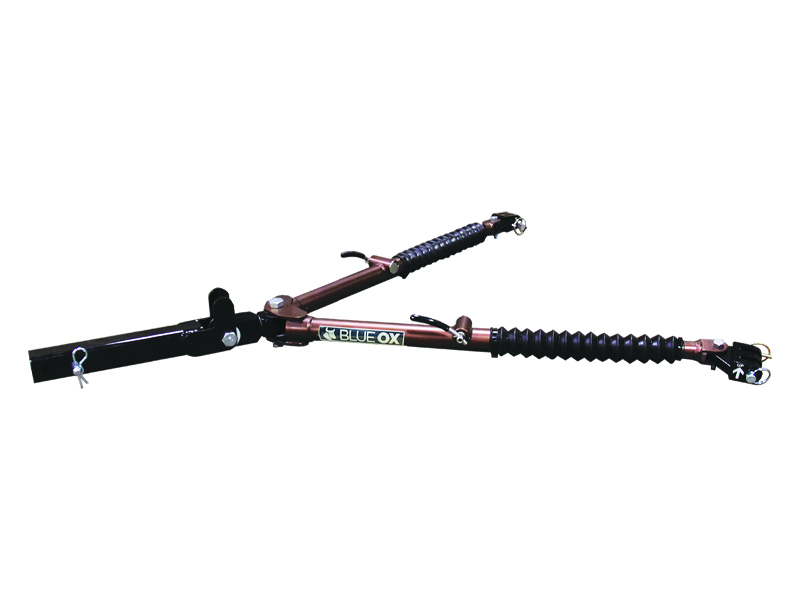
Tow Bar
The tow bar is an arm‑like device that connects the RV hitch to the base plate on your towed vehicle. Its primary purpose is to transfer pulling force from the RV to the toad, allowing the vehicle to follow smoothly and safely. Key tow‑bar terms you should know:
- RV‑Mounted vs. Car‑Mounted – Most modern tow bars, such as the Avail, are RV‑mounted, allowing them to store on the back of the RV when not in use.
- Weight Rating – The tow bar must be rated for more than the actual weight (GVWR) of your towed vehicle. Learn more in Chapter 5.
- Non‑Binding Latches – Make unhooking easier, especially on uneven ground.
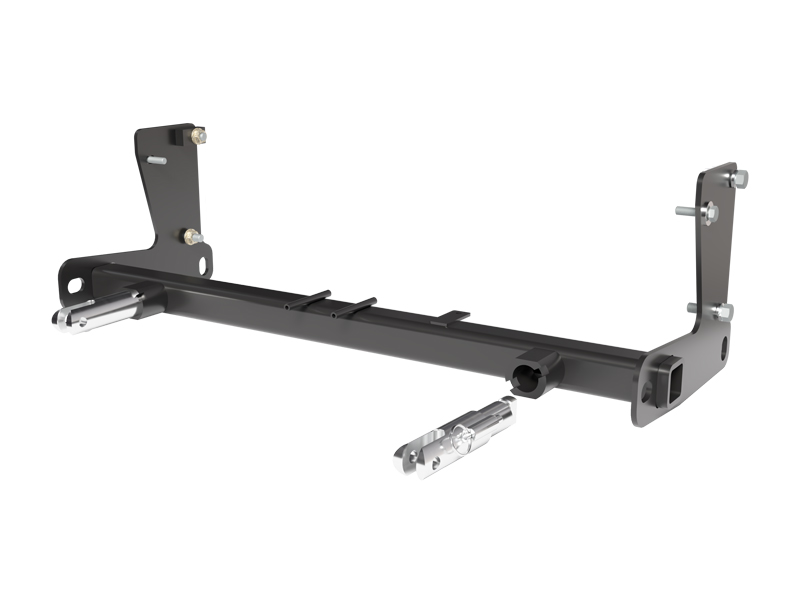
Base Plate
Base plates are vehicle‑specific brackets that secure the tow bar to the vehicle’s frame. They provide strong, secure, and standardized attachment points for the tow‑bar arms, ensuring towing forces are distributed safely without damaging the toad’s bumper or body. Base plates must match the make, model, and year of your vehicle and are not interchangeable between toads.
Check out Blue Ox’s custom base plates with removable tabs for a tailored fit and a clean look.
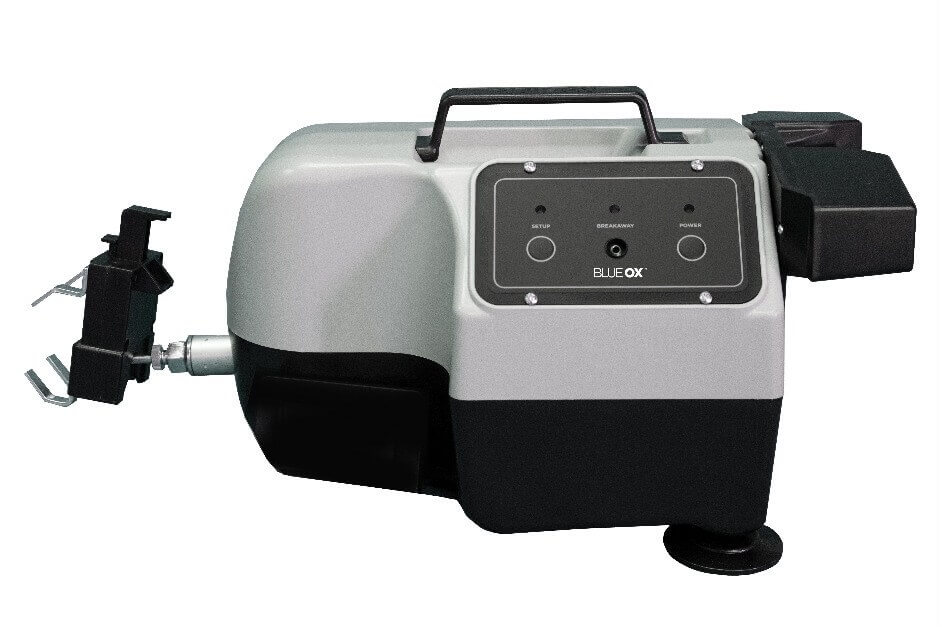
Flat Tow Braking System
Flat‑tow brakes are required in most states and provinces for vehicles over a certain weight (typically 1,500 – 3,000 lbs). They activate the toad’s brakes in sync with your RV, drastically reducing stopping distances, preventing excessive wear on RV brakes, and enhancing overall towing safety.
Types of flat‑tow braking systems include:
- Proportional – Matches the braking intensity of the RV.
- Direct / Progressive – Applies a set or progressively increasing force.
- Portable or Permanent – Floor‑mounted units vs. integrated systems.
Learn more about why supplemental braking systems are a must‑have for safe towing .
Get the best in flat‑tow braking with the Patriot Brake® from Blue Ox .
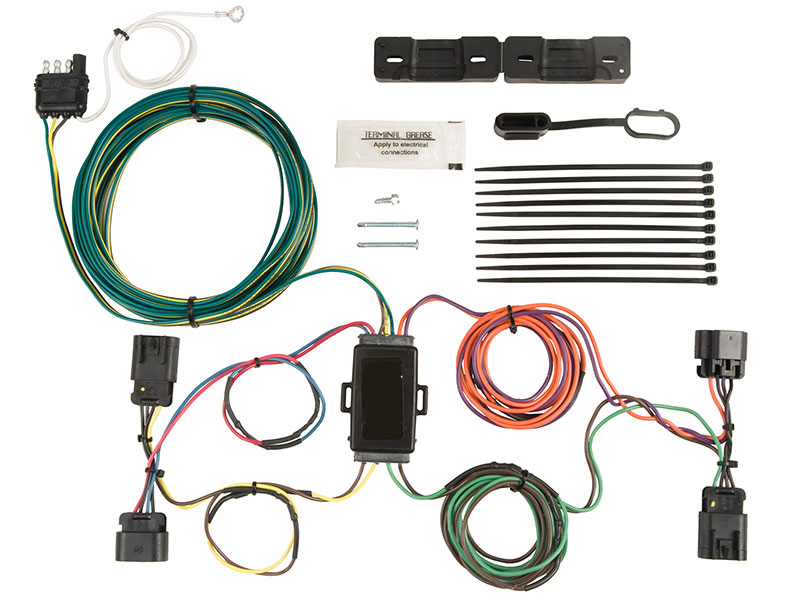
Towing Light Kit & Wiring Harness
A towing‑light kit and wiring harness connect your RV’s electrical system to the lighting system of your towed vehicle. This keeps brake lights, turn signals, and taillights in sync with the RV, ensuring visibility, legal compliance, and safety.
Essential wiring components include:
- Diode kits
- Bulb kits
- Vehicle‑specific harnesses
Explore Blue Ox EZ Wiring kits for everything you need to hit the road safely.
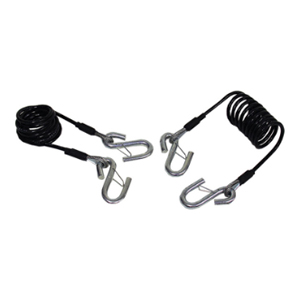
Safety Cables
Safety cables are heavy‑duty steel backups that link the RV’s frame or hitch to the toad’s frame or base plate independently of the tow bar. They keep the toad securely attached if a tow‑bar or hitch failure occurs. Cross them underneath the tow bar to create a cradle that supports the connection point if it drops.
Blue Ox offers safety cables rated from 5,000 lbs to 15,000 lbs .
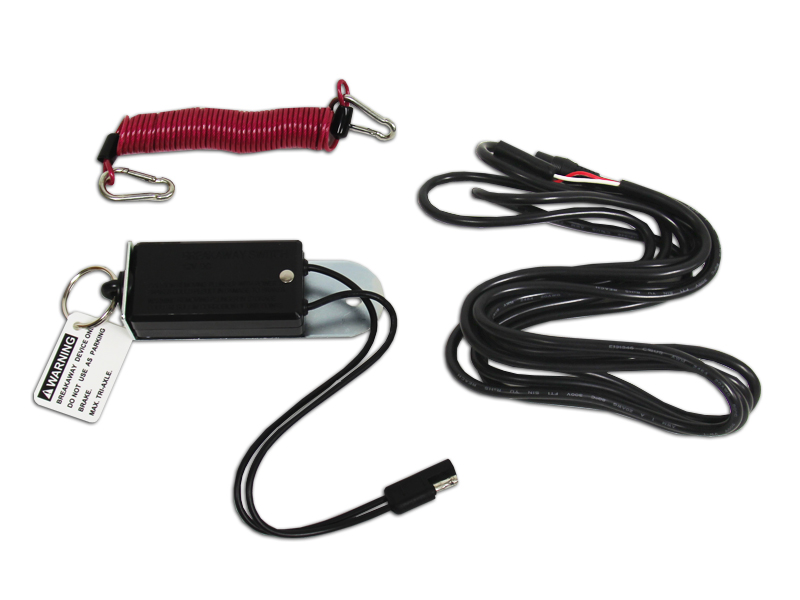
Breakaway System
A breakaway system automatically engages the towed vehicle’s supplemental brakes if it detaches from the RV while in motion, bringing it to a controlled stop and reducing accident risk. Most breakaway switches are integrated directly with supplemental braking systems.
The Blue Ox Patriot Breakaway Switch provides peace of mind on the road. The breakaway switch comes standard with the Patriot brake.
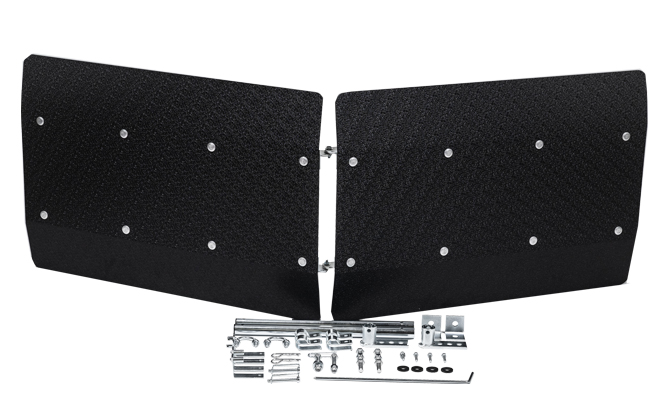
Other Flat Towing Accessories You May Need
Beyond the core components, several accessories enhance safety, performance, and protection for your vehicle. Browse flat‑towing accessories here .
Highly recommended add‑ons from Blue Ox include:
- Drop / Rise Hitches & Receivers – Keep the tow bar level between the RV and toad for safe, efficient towing. See options
- KarGard – A folding polyethylene shield that protects the toad’s front end from road debris. Learn more
- Mud Flaps – Help prevent rocks and debris from hitting the toad. Shop mud flaps
- Hitch Immobilizer – Reduces noise and eliminates extra movement at the hitch connection. Find immobilizers
- Accessory Kits – All‑in‑one kits with essential components for confident flat towing. View kits
For more in‑depth information about flat‑towing equipment, see Chapter 4.
RV Readiness
- Confirm RV’s Towing Capacity (GCWR vs. RV’s GVWR + Toad’s GVWR). Your RV manual and door jamb sticker may have this information. The RV must be rated to safely pull the toad’s weight.
- Check RV tire pressures, fluids, and hitch condition.
Towed Vehicle Readiness
- Confirm toad’s tire pressures and general condition.
- Know your toad’s actual weight (curb weight + cargo) to ensure it’s within equipment ratings.
Equipment Check
Inspect tow bar, base plate, braking system, wiring, and safety cables for any wear or damage.
Hooking Up Your Towed Vehicle Securely
Hooking up your vehicle for flat towing is a straightforward process once you’re familiar with the steps. Following the correct order and double-checking each connection helps ensure a safe and smooth towing experience. Here’s a step-by-step overview to guide you through the proper setup:
- 1. Position the Vehicles: Park both the RV and the towed vehicle on as level ground as possible, in a straight line, leaving a few feet of space between them for easy access.
- 2. Attach the Base Plate: Insert the removable Blue Ox attachment tabs into the receivers on the toad’s base plate until the spring‑loaded detent pins snap fully through the holes. Give each tab a solid tug to confirm it’s locked. Orient the ears so they face straight outward and level—this lines them up for an easy tow‑bar hookup. Wipe any road grit off the tab ends and safety‑cable loops so the Blue Ox pins seat cleanly and the connection stays rattle‑free.
- 3. Attach the Tow Bar: Extend the arms of the tow bar and securely connect them to the base plate on the toad. Double-check that all pins and clips are fully seated and locked.
- 4. Connect Safety Cables: Attach the safety cables between the RV and the towed vehicle. Be sure to cross them under the tow bar to form a cradle that can catch the connection point if it drops.
- 5. Plug in the Wiring Harness: Connect the lighting cable from the RV to the toad so that the brake lights, turn signals, and taillights work in sync.
- 6. Install and Connect the Supplemental Braking System: Set up the brake system according to the manufacturer’s instructions, and make sure to attach the breakaway cable as part of your safety setup.
- Check out our setup guide for the Patriot Brake.
Prepare the Towed Vehicle for Towing
Each vehicle has its own specific towing procedure, so always follow the owner’s manual.
Do a Final Walk-around / Safety Check
Before hitting the road, take a few moments to double-check everything. A quick walkaround can catch small issues before they become big problems.
- Verify all connections: Inspect the tow bar, safety cables, wiring harness, and supplemental braking system to ensure everything is securely attached and properly set.
- Test the lights: Have someone step on the RV’s brake pedal, activate the turn signals, and switch on the headlights while you confirm that all the toad’s lights respond correctly.
- Test the brakes: If possible, do a slow pull test to feel the supplemental braking system engage slightly, confirming it’s functioning as it should.
Tips When Driving With Your Toad
Once you’re on the road with your toad in tow, it’s important to adjust your driving habits to accommodate the added length and weight. These tips will help you tow safely and confidently:
- Never back up while flat towing. Reversing with a toad attached can cause serious damage to the tow bar, base plate, and both vehicles due to jackknifing. If you need to reverse, always disconnect the toad first. Learn more about why you shouldnt’ back up when flat towing
- Increased turning radius, Your overall length is much greater now. Make wider turns, especially right-hand turns, to avoid curbing or clipping your towed vehicle.
- Slower speeds and longer stops. Drive more cautiously and allow extra space when braking. The added weight means your stopping distance will be significantly longer.
- Plan lane changes and merges early. With more length to manage, give yourself plenty of room and time when changing lanes or merging onto highways.
- Routine checks during stops. At each fuel stop or rest break, walk around and inspect all connections. Check the tow bar, cables, wiring, and the overall condition of your toad to make sure everything is secure.
Unhooking Your Towed Vehicle
When you arrive at your destination, it’s important to unhook your toad safely and in the correct order to avoid damage or missed steps.
- 1. Position the vehicles. Park on level ground if possible, and engage the parking brakes on both the RV and the towed vehicle.
- 2. Disconnect in reverse order. Work backward from your hookup process:
-
- (1) Prepare the toad for regular driving by turning the ignition on or off as needed, reconnecting any fuses or the battery if they were previously disconnected.
-
- (2) Disconnect the supplemental braking system and remove the breakaway cable.
-
- (3) Unplug the lighting harness from the RV.
-
- (4) Detach the safety cables.
-
- (5) Release and remove the tow bar arms from the base plate, and store the tow bar securely
- 3. Move the toad clear of the RV. Once everything is disconnected and stored, drive the towed vehicle away from the motorhome to complete the process.
Flat Towing vs. Tow Dollies vs. Full Trailers
When it comes to bringing a second vehicle along on your RV adventures, there are a few different towing methods to choose from. Each has its pros and ideal use depending on your vehicle type, travel preferences, and storage capacity. Here’s a quick comparison of the three main options: flat towing, tow dollies, and full trailers, to help you determine which setup fits your needs best.
| Towing Method | How It Works | Best For |
| Flat Towing (Four Wheels Down) | The towed vehicle rolls on all four tires, connected directly to the RV via a tow bar and base plate. | RVers who value quick hookup and unhook, minimal gear, and instant access to a passenger vehicle. |
| Tow Dolly (Two Front Wheels Up) | A small trailer lifts the front wheels off the ground, while the rear wheels remain on the road. | Front-wheel-drive automatics that aren’t flat-towable; users willing to manage extra equipment and storage. |
| Full Trailer (All Four Wheels Off the Ground) | The entire vehicle is loaded onto a trailer, keeping all wheels off the pavement during transport. | Vehicles that cannot be flat or dolly towed, such as some AWD/RWD automatics, classics, or race cars. |
Flat Towing Laws, Safety, & Maintenance
Flat towing successfully over the long haul takes more than a good setup. Following the law, practicing safe habits, and maintaining equipment properly are key to keeping your trips smooth and trouble-free.
Legal requirements vary by state and province, but here are the basics that apply in most places:
| Requirement | Why It Matters / Typical Rule |
|---|---|
| Supplemental Braking Systems | Required in most U.S. states and Canadian provinces for towed vehicles above 1,500 – 3,000 lbs. Even where not required, it’s always a smart safety measure. |
| Safety Cables | Mandatory everywhere. Provide a critical backup connection if the tow bar or hitch fails. |
| Lighting | The toad’s brake lights, turn signals, and taillights must mirror the RV’s signals for legal compliance and visibility. |
| Breakaway System | Often required alongside supplemental brakes; automatically applies the toad’s brakes if it detaches from the RV. |
| Speed Limits | Some jurisdictions set lower maximum speeds when towing. Check limits along your route. |
Safety Best Practices for Flat Towing
Flat towing is reliable when done right. These practices will help you stay safe:
- ✅Inspect before every trip. Do a full walkaround: check tow bar connections, safety cables, lighting, and your braking system.
- ✅Follow your owner’s manual. Every towed vehicle has specific procedures, such as gear selection, ignition position, and fuse removal; ignoring them is at your own risk.
- ✅Don’t back up while towing. It can damage your tow bar, base plate, or vehicle.
- ✅Stay alert behind the wheel. You’re longer and heavier now, so increase following distances and take turns wider.
- ✅Re-check at every stop. At fuel stops or rest areas, walk around and verify that everything’s still secure.
Troubleshooting Common Flat Towing Issues
Even with the right equipment and preparation, flat towing can present a few challenges along the way. Here are some typical flat towing problems RVers encounter and how to handle them effectively.
1. Towed Vehicle Battery Drain
- What Causes It: Incorrect ignition setting, power-hungry accessories left on, no battery charge line.
- Fix: Verify ignition is in the proper position and install a charge line or battery disconnect if required.
2. Transmission or Drivetrain Damage
- What Causes It: Not following the flat towing procedures in the owner’s manual.
- Prevention: Always follow the specific steps provided for your vehicle, every time.
Routine Maintenance for Your Flat Towing Gear
Just like your RV, your towing setup gear needs routine care:
Tow Bar Maintenance
- Clean and lubricate moving parts regularly. Inspect for damage or loose hardware. Blue Ox recommends servicing your tow bar every 2 years or 10,000 miles, whichever comes first.
- Tow bars older than 8 years should be replaced. Ask about our $150 trade-in program available at many Blue Ox dealers and check out Blue Ox events where tow bar servicing is offered: view the schedule here.
Base Plate Maintenance
- Periodically check all mounting bolts on the vehicle to ensure they’re tight.
Supplemental Braking System Maintenance
- Test the system before each trip and follow the maintenance schedule provided by the manufacturer.
Wiring & Connectors Maintenance
- Keep connectors clean and apply dielectric grease to prevent corrosion and signal loss.
Towed Vehicle Maintenance
- Even though the engine isn’t running, your tires, wheel bearings, and suspension still wear. Stick to your regular service intervals and monitor tire pressure.
Equipping for Flat Towing Success with Blue Ox
Now that you understand the ins and outs of flat towing, you’re ready to hit the road with confidence. By choosing equipment tailored to your vehicle, investing in reliable gear, and following best practices, you’ll enjoy a safer, smoother, and more flexible RV travel experience.
The Blue Ox Commitment to Your Journey
At Blue Ox, we’re committed to supporting your RV lifestyle with towing solutions that are innovative, durable, and simple to use. Whether you’re a full-timer or a weekend adventurer, our products are built to make flat towing easy and worry-free.
Explore Our Full Lineup of Flat Towing Products
From top-rated tow bars to custom-fit base plates and dependable braking systems, we have everything you need for a complete and safe towing setup.
Find a Certified Blue Ox Dealer or Installer
Get expert guidance and professional installation from trusted partners in your area.
Get Blue Ox Support & Service
Our knowledgeable customer support team is here to make sure your towing experience is smooth from start to finish. Need service or repairs? Here’s how Blue Ox can help:
- Warranty Info: Check coverage or file a claim
- Service at Rallies: We offer on-site service at many RV events. Find upcoming events here
- Factory Service: Ship your equipment to Blue Ox for inspection and repair by our expert team.
Flat Towing FAQs
What is flat towing?
Flat towing, also known as dinghy towing or four-down towing, involves towing a vehicle behind your RV with all four wheels on the ground. It offers a convenient way to bring a second vehicle without the added bulk of a trailer or tow dolly.
How do I know if my car can be flat towed?
Check your vehicle’s owner’s manual. Look under sections like “Recreational Towing” or “Dinghy Towing.” The manual will specify whether your vehicle can be flat towed and outline any necessary steps to prevent damage to the drivetrain or transmission.
What essential equipment do I need for flat towing?
A complete flat towing setup includes a tow bar, a vehicle-specific base plate, a supplemental braking system, safety cables, and a wiring kit to connect the RV’s lighting system to the towed vehicle.
Are there important safety rules to follow when flat towing?
Yes. Most areas require the use of supplemental brakes and safety cables by law. Always verify that your toad’s brake lights, turn signals, and taillights operate in sync with your RV. And never try to back up while flat towing. Doing so can cause serious damage to both vehicles and your towing gear.
Flat Tow with Confidence. Flat Tow with Blue Ox.
Enhance your RV adventures with the freedom of flat towing. Explore Blue Ox’s industry-leading tow bars, base plates, braking systems, and accessories. Unlock your towing freedom. Browse our flat towing lineup now or connect with a certified dealer today to get rolling with confidence and equip your setup for your next RV adventure.









